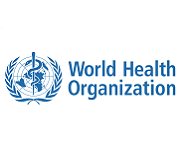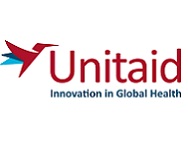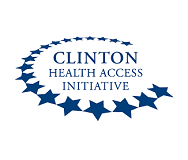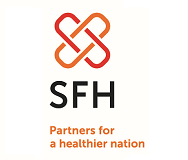Facility-based HIV self-test kit distribution: A model for strengthened HIV health services delivery in Zambia
Namuunda Mutombo1 and Mutinta Nalubamba2
1 Department of Research, Monitoring & Evaluation, Society for Family Health, Lusaka, Zambia.
2 Department of Health Services, Society for Family Health, Lusaka, Zambia.
The public sector health facility-based distribution (FBD) model is one of many distribution models being used to deliver HIV self-test (HIVST) kits to individuals; other approaches include community based, door to door distribution of HIV self-test kits through community based health workers or distribution through the voluntary medical male circumcision (VMMC) program (HIV testing being one of the components of VMMC). The health facility-based model is being implemented in all the facilities participating in the UNITAID/PSI HIV Self-Testing Africa (STAR) Project in Zambia. The facility-based distributor has three major roles. The first role is to distribute the HIVST kits to the community based distributors (CBDs) and account for and maintain stock levels using project specific stock control cards and registers. The facility-based distributor also distributes kits to people who prefer to access them from the facility as opposed to obtaining them from the community. Thirdly, he or she also acts as a link for individuals who have self-tested at the facility or within the community to post-test services such as confirmatory HIV testing and VMMC. Testers present a “self-referral card” to the facility distributor on which the post-test service required is recorded by the distributor, who then links the testers to the facility providing the service.
Demand for FBD is created through CBDs at community level and from within the facility. Clients who would normally be accessing conventional HIV testing services (HTS) either through voluntary counselling and testing (VCT) and provider initiated testing and counselling (PITC) at the facility can opt to self-test.
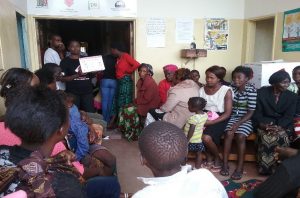
Facility-based distributor giving a group demand creation talk in the OPD department
HIVST kits are offered through services of the out-patient department (OPD) or at any location within the facility as deemed appropriate through facility assessment, which is conducted by the Society for Family Health (SFH) in liaison with health facility staff. Acceptors collect HIVST kits on-site, together with information brochures, envelopes for putting used test kits into, and self-referral cards to access post-test services (confirmative HIV testing and treatment care in case of a reactive HIV self-test or referral HIV prevention services in case of an HIV negative result) after HIV self-testing. Each potential tester is provided with verbal instructions and demonstration by the distributor on how to conduct a self-test, interpret results and follow important post-test steps (e.g. link to confirmative testing, care or prevention services). Testers have the option of being assisted by the distributor to do the test or take the kit to conduct the test at their own convenience.
HIVST kits are not given to third parties to assure their use and to also avoid distortion of information, especially when the person who has collected the kit is unable to pass on the information properly. The FBD model is being implemented in all 16 health facilities participating in the STAR project in Ndola, Lusaka, Kapiri-Mposhi and Choma Districts. All health facility distributors have been trained on how to distribute HIVST kits, provision of information and demonstration on the use of the kit as well as provision of support to the clients.
Number of kits distributed and returned
A total of 6,524 self-test kits were distributed through the facility-based model between July and December, 2016. This represents about 9 per cent of all kits distributed from all of three distribution models implemented in Zambia. Most kits (80%) were distributed through the CBD model, followed by the VMMC model at 11 per cent. However, on average, distributors under the FBD model distributed higher number of kits (72 per distributor) per month compared with 67 kits per distributor per month under the CBD model (see Figure 1). The VMMC model had the highest rate per distributor per month, with 88 kits being distributed.
Figure 1: Average monthly per capita number of kits distributed by distribution model-Jul-Dec 2016
Further, although the FBD model had the lowest number of kits distributed, it has the highest used self-test kit return rate, followed by the VMMC model (see Table 1). Close to half (46%) of the kits distributed under the FBD model were returned after use by clients. Overall, a third of kits were returned between July and December 2016.
Table 1: Number of kits distributed by distribution model and return rate, July-December 2016.
|
Month |
Distribution Model | Total | ||||||
| CBD | Facility-based | VMMC | ||||||
| Kits distributed | % Returned | Kits distributed | % Returned | Kits distributed | % Returned | Kits distributed | % Returned | |
|
July |
1,906 |
22 |
301 |
32 |
509 |
27 |
2,716 |
23 |
|
Aug. |
4,046 |
31 |
739 |
40 |
929 |
42 |
5,714 |
34 |
|
Sept. |
5,110 |
37 |
717 |
51 |
627 |
37 |
6,454 |
38 |
|
Oct. |
12,912 |
27 |
1,267 |
41 |
1,191 |
32 |
15,289 |
29 |
|
Nov. |
15,772 |
29 |
1,384 |
43 |
1,939 |
36 |
19,095 |
31 |
|
Dec. |
15,913 |
36 |
2,116 |
52 |
1,674 |
51 |
19,703 |
39 |
|
Total |
55,659 |
31 |
6,524 |
46 |
6,869 |
39 |
68,971 |
33 |
Program implications
Our data show an average of two to three kits were distributed per day per distributor during the reference period, with the FBD model. These data demonstrate that it is feasible to effectively distribute HIVST kits to individuals seeking healthcare services at public sector health facilities. As such, facility-based distribution of self-test kits has the potential to increase efficiency of provider initiated testing and counselling if distribution is expanded to all service delivery points within each health facility.


